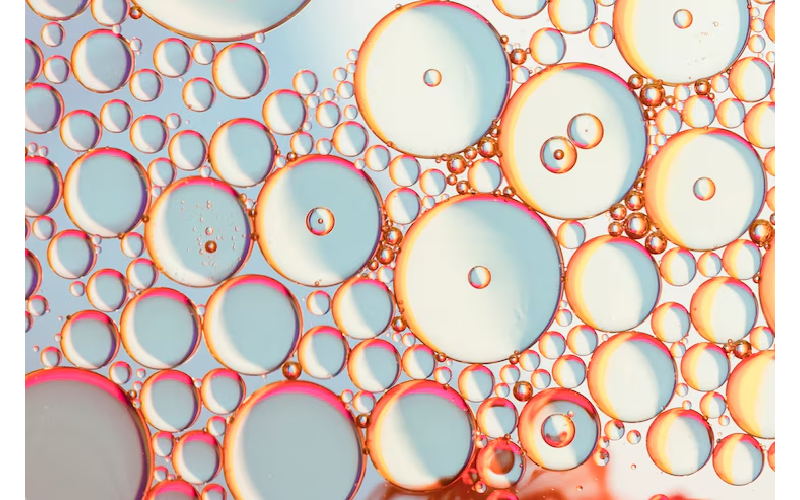Mesenchymal stem cells (MSCs) are fascinating because they can turn into various cell types, like those found in bone, cartilage, and fat. You can find these cells in places such as bone marrow and adipose tissue. To isolate MSCs effectively, it’s crucial to collect tissue samples under sterile conditions. For instance, using a needle for bone marrow or performing lipoaspiration for fat. Once you prepare the sample—like mincing adipose tissue with collagenase—you’ll need to separate the cells from debris through centrifugation. Finally, before culturing them in suitable conditions and testing their potential differentiation capabilities, ensure proper storage if needed for later use.
1. Definition of Mesenchymal Stem Cells
Mesenchymal stem cell (MSCs) are special types of cells found in various tissues throughout the body. They are known for their ability to transform into different cell types, such as bone cells (osteoblasts), cartilage cells (chondrocytes), and fat cells (adipocytes). This unique trait makes them multipotent, meaning they can develop into multiple cell lineages. MSCs are commonly sourced from areas like bone marrow, adipose (fat) tissue, umbilical cord tissue, synovial fluid, and even dental pulp. Each source has its own advantages and characteristics that can influence their isolation and use in research and therapies.
2. Common Sources of MSCs
Mesenchymal stem cells (MSCs) can be isolated from several key sources in the body, each offering unique advantages. Bone marrow is one of the most traditional sources, rich in MSCs, but the extraction process can be invasive. Adipose tissue, harvested through liposuction, has gained popularity because it provides a higher yield of MSCs with a less invasive procedure. The umbilical cord is another promising source, often collected after birth, which contains a rich supply of stem cells with minimal ethical concerns. Synovial fluid, found in joints, and dental pulp, especially from extracted teeth, are also viable sources for MSCs, contributing to tissue regeneration. Each source presents different processing and isolation techniques, which may influence the quality and quantity of the isolated MSCs.
3. Preparing Tissue Samples for Isolation
Preparing tissue samples is a critical step in isolating mesenchymal stem cells (MSCs). First, it’s essential to ensure that the collection of tissue is carried out in sterile conditions to reduce the risk of contamination. For example, when collecting bone marrow, a sterile needle and syringe should be used to aspirate the marrow from locations like the iliac crest. Similarly, adipose tissue can be obtained through a lipoaspiration procedure, which is also performed under sterile conditions.
Once the tissue is collected, the processing begins. In the case of bone marrow, the aspirated fluid should be diluted with an equal volume of sterile saline or phosphate-buffered saline (PBS). This dilution helps prepare the sample for centrifugation, where low-speed spinning (e.g., 300-400 g) for about 10 minutes will separate the cellular components from debris. For adipose tissue, the next step involves mincing the tissue into small pieces, followed by digestion using an enzyme solution, typically collagenase type I or II. This digestion process usually lasts 30-60 minutes at 37°C with gentle agitation to ensure thorough breakdown. After digestion, the enzyme activity is neutralized with fetal bovine serum (FBS) before centrifuging to isolate the stromal vascular fraction.
4. Processing Bone Marrow and Adipose Tissue
When processing bone marrow, the first step is to dilute the aspirated marrow with an equal volume of sterile saline or phosphate-buffered saline (PBS). This helps in separating the cellular components from debris effectively. After dilution, centrifugation at a low speed, approximately 300-400 g for around 10 minutes, is crucial. This step allows for the sedimentation of cells while the debris remains in the supernatant, which can be discarded.
For adipose tissue, the process starts differently. Here, the tissue is minced into small pieces to increase the surface area for enzymatic digestion. A common enzyme used for this purpose is collagenase type I or type II. The minced adipose tissue is incubated with the enzyme solution at 37°C for 30-60 minutes, with gentle shaking to ensure a thorough breakdown. After digestion, the enzyme activity is neutralized, usually with fetal bovine serum (FBS), and then centrifuged. This centrifugation separates the stromal vascular fraction, which contains the mesenchymal stem cells. Each tissue type has its unique processing requirements, but both methods aim to isolate viable, functional MSCs for further applications.
5. Steps for Isolating Cells
To isolate mesenchymal stem cells (MSCs) from tissue, the process begins with the careful collection of the tissue sample. This must be done under sterile conditions to avoid contamination. For example, bone marrow can be obtained using a sterile needle and syringe from the iliac crest, while adipose tissue can be collected through a lipoaspiration procedure.
Once the tissue is collected, it must be processed. For bone marrow, dilute the aspirate with an equal volume of sterile saline or phosphate-buffered saline (PBS) and centrifuge at low speed (300-400 g) for about 10 minutes. This helps in separating the cells from any debris. In the case of adipose tissue, the sample should be minced into small pieces and digested with an enzyme solution, such as collagenase, for 30 to 60 minutes at 37°C. After digestion, the enzyme is neutralized with fetal bovine serum (FBS), and the mixture is centrifuged to obtain the stromal vascular fraction.
Following processing, the cell pellet is resuspended in complete culture medium, like DMEM/F12 with 10% FBS and antibiotics. To enrich for MSCs, a density gradient centrifugation can be performed using Ficoll, which helps separate mononuclear cells from other cell types.
After isolating the cells, they should be plated in tissue culture flasks at a density of 1-2 x 10^4 cells/cm² and incubated under standard conditions at 37°C with 5% CO2. It’s important to change the culture medium every 2-3 days to remove non-adherent cells and debris.
As the MSCs grow, they can be characterized for surface markers using flow cytometry. Typical markers include positivity for CD73, CD90, and CD105, while being negative for CD34 and CD45. Additionally, their differentiation potential into osteogenic, chondrogenic, and adipogenic lineages can be evaluated by culturing them in specific differentiation media.
- Gather necessary materials and equipment.
- Ensure tissue integrity for optimal yield.
- Mince tissue samples into small pieces.
- Use appropriate enzymatic digestions to liberate cells.
- Filter the digested solution to remove debris.
- Centrifuge to separate the cell layer from the supernatant.
- Resuspend the cell pellet in a suitable medium.
6. Culturing Isolated Mesenchymal Stem Cells
Once you have isolated mesenchymal stem cells (MSCs), the next crucial step is culturing them to ensure their growth and maintenance. Start by plating the isolated cells in tissue culture flasks at a density of around 1-2 x 10^4 cells per cm². It’s important to use complete culture medium, such as DMEM/F12 supplemented with 10% fetal bovine serum (FBS) and appropriate antibiotics to promote cell health and prevent contamination.
Culturing should be performed under standard conditions, typically at 37°C with 5% CO2. During the first few days, you might notice that the non-adherent cells will wash away. This is a normal part of the process, so change the medium every 2-3 days to keep the culture clean and to support the growth of MSCs.
As the cells proliferate, they will reach 70-80% confluence. At this stage, it’s vital to characterize the MSCs to confirm their identity and functionality. This can be done through flow cytometry to check for specific surface markers, like CD73, CD90, and CD105, while ensuring they are negative for hematopoietic markers such as CD34 and CD45.
Moreover, to assess their differentiation potential, culture the MSCs in specialized differentiation media. This can help determine their ability to become osteoblasts, chondrocytes, or adipocytes, which is essential for their application in regenerative medicine. Proper culturing techniques are fundamental for maintaining the quality and viability of MSCs for research and therapeutic uses.
7. Characterizing MSCs for Research
Characterizing mesenchymal stem cells (MSCs) is crucial for validating their identity and ensuring their suitability for research and clinical applications. Once MSCs reach about 70-80% confluence in culture, they can be characterized through various methods. One common approach is flow cytometry, which allows researchers to analyze surface markers on the cells. MSCs are typically positive for markers such as CD73, CD90, and CD105, indicating their stem cell properties, while they are negative for hematopoietic markers like CD34 and CD45. This distinction is vital for confirming that the isolated cells are indeed MSCs.
Another important aspect of characterization is assessing the differentiation potential of MSCs. This can be achieved by culturing the cells in specific differentiation media designed for osteogenic, chondrogenic, and adipogenic lineages. For example, when placed in osteogenic medium, MSCs should show signs of mineralization, which can be verified using Alizarin Red staining. Similarly, culturing in chondrogenic medium should promote the formation of cartilage-like structures, while adipogenic conditions should lead to lipid droplet formation, assessed via Oil Red O staining. These differentiation assays not only confirm the multipotency of MSCs but also provide insights into their functional capabilities in regenerative medicine.
In summary, the characterization of MSCs through surface marker analysis and differentiation potential is essential in ensuring the cells are correctly identified and understood for their applications in research and therapy.
8. Techniques for Cryopreservation
Cryopreservation is a crucial step for the long-term storage of mesenchymal stem cells (MSCs), ensuring their viability for future research or therapeutic applications. The process typically involves using a cryoprotectant, such as dimethyl sulfoxide (DMSO), which helps to prevent ice crystal formation that can damage cell membranes during freezing. A common protocol involves resuspending the MSCs in a freezing medium that contains 10% DMSO and 90% fetal bovine serum (FBS).
Once prepared, the cell suspension is placed in cryovials and gradually cooled. This is often done using a controlled-rate freezer, which allows for a slow cooling process at approximately -1°C per minute until reaching -80°C. At this stage, the vials can be transferred to liquid nitrogen for long-term storage. For example, storing the vials in a nitrogen tank at -196°C can preserve the cells for years without significant loss of viability.
It’s important to note that when thawing cryopreserved MSCs, the process should be done quickly to minimize damage. Typically, vials are immersed in a 37°C water bath until just thawed, and then immediately diluted with culture medium to wash away the DMSO. Following these steps ensures that MSCs remain healthy and functional when revived for use in research or clinical applications.
9. Safety Considerations in Cell Isolation
When isolating mesenchymal stem cells (MSCs) from tissue, safety is paramount. It’s crucial to adhere to biosafety regulations and ethical guidelines, particularly when handling human samples. All procedures should be carried out in a designated biosafety cabinet to minimize the risk of contamination and exposure. Personal protective equipment (PPE) such as gloves, lab coats, and face masks should always be worn to protect both the researcher and the samples. Additionally, it’s important to properly dispose of biological waste in accordance with local regulations to prevent any potential hazards. For instance, any contaminated materials, like used syringes or tissue remnants, should be placed in biohazard bags and treated as medical waste. By following these safety protocols, researchers can ensure a safe and effective environment for cell isolation.
10. Applications of Mesenchymal Stem Cells
Mesenchymal stem cells (MSCs) have a wide range of applications in medicine and research, primarily due to their unique properties. One major use is in regenerative medicine, where MSCs help repair damaged tissues and organs. For instance, they are being studied for treating conditions like osteoarthritis, where their ability to differentiate into cartilage cells can aid in joint repair.
In tissue engineering, MSCs are combined with biomaterials to create scaffolds that can support cell growth and tissue formation. This approach is promising for developing new treatments for injuries or degenerative diseases. Additionally, MSCs have immunomodulatory effects, making them valuable in treating autoimmune diseases and reducing transplant rejection.
Furthermore, clinical trials are underway exploring MSCs in therapies for heart disease, diabetes, and neurological disorders. Their potential to release growth factors and cytokines enhances healing processes. As research continues, the applications of MSCs are expected to expand, potentially revolutionizing how various diseases are treated.
Frequently Asked Questions
1. What are mesenchymal stem cells and why are they important?
Mesenchymal stem cells are a special type of cell found in your body that can turn into different types of cells. They’re important because they help with healing and repairing tissues.
2. What tissues can I use to isolate mesenchymal stem cells?
You can take mesenchymal stem cells from various tissues like bone marrow, fat tissue, and sometimes even from umbilical cords. Each type offers different benefits.
3. What methods are used to isolate these cells from tissue?
Common methods include mechanical methods like mincing the tissue and chemical methods using enzymes to break down the tissue to release the cells.
4. Is it safe to isolate mesenchymal stem cells from tissues?
Generally, it’s safe if done by trained professionals. However, like any medical procedure, there can be some risks involved.
5. How are isolated mesenchymal stem cells identified and confirmed?
After isolation, researchers usually use specific markers and tests to confirm that the cells are indeed mesenchymal stem cells and not something else.
TL;DR Mesenchymal stem cells (MSCs) are versatile stem cells found in sources like bone marrow and adipose tissue. To isolate MSCs, start with sterile tissue sample collection, process the samples using centrifugation or enzymatic digestion, and then perform cell isolation through density gradient centrifugation. Culturing involves placing cells in a suitable medium, and characterization assesses their surface markers and differentiation capabilities. For long-term storage, cryopreservation in DMSO is recommended. Safety protocols should be followed rigorously. MSCs have significant applications in regenerative medicine and tissue engineering.




